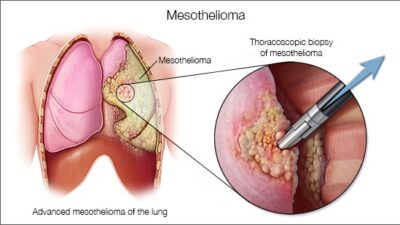Mesothelioma is a rare and aggressive cancer that primarily affects the lining of the lungs (pleura), abdomen (peritoneum), heart (pericardium), or testicles (testicular mesothelioma).
This devastating disease is predominantly linked to asbestos exposure, and its prognosis can be grim due to its aggressive nature and often late-stage diagnosis.
In this comprehensive article, we will delve into the intricacies of mesothelioma survival rates, exploring the factors that influence them and discussing recent advancements in treatment options.
Understanding Survival Rates
Mesothelioma survival rates provide valuable insights into the overall prognosis for individuals diagnosed with this challenging cancer.
These rates are typically represented as percentages and reflect the percentage of patients who are expected to survive for a specific period after diagnosis.
The key factors influencing survival rates include the stage at diagnosis, the type and location of the cancer, age, overall health, and the chosen treatment approach.
1. Stage at Diagnosis:
The stage at which mesothelioma is diagnosed is a crucial determinant of survival. The cancer is typically classified into four stages:
- Stage I: Mesothelioma is localized, affecting only the mesothelial lining.
- Stage II: The cancer has spread to nearby structures or lymph nodes.
- Stage III: The cancer has reached advanced stages, invading nearby organs.
- Stage IV: The cancer has metastasized, spreading to distant organs or tissues.
Generally, individuals diagnosed at earlier stages (I and II) have a more favorable prognosis than those diagnosed at later stages (III and IV).
Early detection through routine screenings or prompt medical evaluation can significantly improve survival rates.
2. Type and Location of Mesothelioma:
There are four primary types of mesothelioma, classified by the affected site:
- Pleural Mesothelioma: Affecting the lining of the lungs.
- Peritoneal Mesothelioma: Affecting the lining of the abdomen.
- Pericardial Mesothelioma: Affecting the lining of the heart.
- Testicular Mesothelioma: Affecting the lining of the testicles (extremely rare).
Pleural mesothelioma, being the most common type, generally has a more favorable prognosis compared to the other forms, primarily due to the availability of more treatment options and early detection.
3. Age and Overall Health
The age and overall health of a mesothelioma patient can significantly impact their ability to tolerate and respond to treatments. Younger, healthier individuals tend to have better survival rates as they can withstand more aggressive treatment approaches.
4. Treatment Options
Mesothelioma treatment typically involves a combination of approaches, such as surgery, chemotherapy, radiation therapy, immunotherapy, and targeted therapy.
The choice of treatment and its success play a critical role in determining survival rates. Advances in medical research have led to the development of more effective treatment strategies, improving the outlook for some patients.
Survival Rate Statistics
Historically, mesothelioma has been associated with relatively low survival rates, primarily due to late-stage diagnoses and limited treatment options. On average:
- The one-year survival rate is approximately 40%.
- The five-year survival rate is approximately 10%.
It’s important to note that these statistics represent historical data and may not accurately reflect the current state of mesothelioma care.
Recent advances in medical research, the development of novel treatment approaches, and improved patient care have offered some patients more optimistic prospects in recent years.
Factors Influencing Improved Survival
While mesothelioma remains a formidable adversary, several factors can enhance a patient’s chances of survival:
1. Early Detection
Regular health check-ups and screenings, especially for individuals with a known history of asbestos exposure, can lead to earlier diagnosis and more effective treatment.
2. Multimodal Treatment
Combining different treatment modalities, such as surgery, chemotherapy, radiation therapy, immunotherapy, and targeted therapy, can provide better results than relying on a single treatment approach.
3. Expert Medical Care
Seeking treatment at specialized mesothelioma treatment centers and consulting with experienced healthcare professionals can make a significant difference in the outcome. Specialized facilities often have access to the latest treatments and clinical trials.
4. Supportive Care
Emotional and psychological support, along with pain management and palliative care, can improve the overall quality of life for mesothelioma patients, even in advanced stages of the disease.
Conclusion
Mesothelioma is indeed a challenging and aggressive cancer, but there is hope on the horizon. Survival rates are influenced by various factors, including early detection, type and stage of mesothelioma, age, overall health, and the chosen treatment approach.
Recent advancements in research and treatment options are gradually improving the outlook for mesothelioma patients.
While the historical statistics may be discouraging, it is crucial for individuals diagnosed with mesothelioma and their families to remain informed, seek expert medical care, and explore available treatment options.
By doing so, patients can maximize their chances of achieving a more favorable outcome, ultimately offering hope in the face of this formidable disease.













